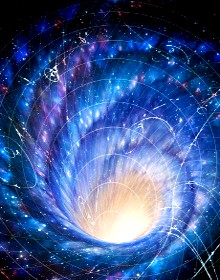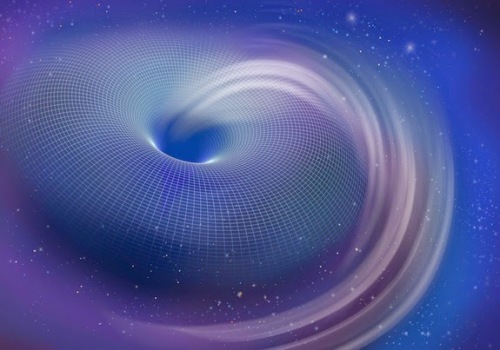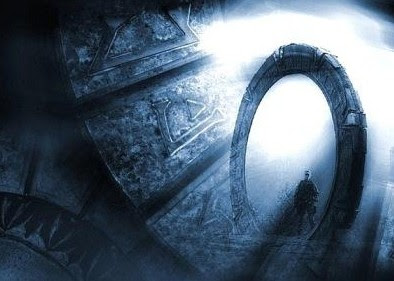“Space contains the threads which connect souls and cause attraction. When their call is understood, Space takes on an infinite beauty.”
It is thought that space and time are difficult to understand: especially the latter. The greatness of these two elements disconcerts man. Without knowing where, many people unconsciously put limits either on one or the other. In a confused way they imagine an initial time, from which the ages are counted, and a far-off last instant; and the space of which they think is also in some way circumscribed.
The space which man imagines reflects in some way his concept of horizon. He seems to think that universal space finishes in a horizon, like the individual space of each person. That enigmatic line which is thrown around us is difficult to grasp, elusive but real; it moves with us and it expands or shrinks as we go up or down. Just as no-one can reach it, no-one can escape its enchantment. It will be good to reflect resolutely sooner or later on this concept of horizon. It is too important a symbol to be neglected, and perhaps the unbiased study of its qualities, whether constant or varying from point to point, will lead one to know many things, which were known in ancient times, about oneself and about life. That magic circle is the meeting point of the terrestrial forces, projected into Space, and of the celestial ones, lowered from their sublime heights. It must, therefore, develop many relationships and give direction and sense to the events and rhythms of human life. But today men do not care about these investigations and the horizon, though so fascinating and always present in every one of their manifestations, ends up by being the boundary, accepted and distant, of their space. This idea of a limit is thus projected also into cosmic Space; a very distant term, on which it is useless and inappropriate to speculate.
Time as a concept and a perception also weighs on human intelligence like a lid. In the way it is understood, as having an origin and an end, it places limits on man’s experiences of life: it opens and closes, begins and interrupts. The birth and death of a man or a universe are within the limits of a temporal horizon. This, however – unlike the spatial one, which in some way can always be examined and can vary, without dissolving, according to the will of its prisoners – is mysteriously closed to interrogation. Death arrives as fatal, if not unexpected like birth. Time seems to be spent at a variable “speed”; and, in point of fact, every moment can be the last for everyone and everything.
Thus the men around us reason, in the kingdom of quantity. Massive prejudices have been built up regarding the duality of time and space. They are hard to shift, not because they are a solid construction, but because they are confusedly interconnected. But, in our opinion, as long as one allows oneself to remain circumscribed by a visible but unexplored horizon and to succumb to limits of time, one will certainly not go far in space, nor will real, lasting fruit be left. It seems to us to be supremely important to attack these limitations spiritually, with one means or another: by studying the qualities of the horizon and the space which it seems to close around us, like conscious points of a figure; or with affirmations on the nature of time, which empty it of power. If then, as is legitimate, these affirmations and discoveries turn out to be only stages and pauses of little importance, still individual and collective thought will have been shaken out of an enormous lethargy.
***
In the treatise by Hans Kaiser the paragraph on space-time (para. 7) offers a suitable occasion to express, with some force and in brief, a reaction to the inertia of contemporary human opinions with regard to space and time.
Introducing his arguments, which aim to present in a harmonic sense the reciprocity between time and space, the Author, without wishing to enter into philosophical speculations, uses this phrase: “we are in space, we become in time”. It is the simple formulation of a little understood truth and it can be chosen in support of our affirmations. (It must be said that these do not claim to demonstrate what they assert: but they are directed to those levels of the mind which do not need proofs).
In reality, man is.
His becoming is illusory. And, as he is in Space, this is the very seat of reality.
Time is  unreal, like becoming.
unreal, like becoming.
One must therefore deny that space and time are realities which are complementary or joined in a reciprocal relationship.
The more one rises by exploring, the more real and living is Space revealed: the horizon not only expands but lights up with wonderful qualities, and by a line of demarcation it changes into an instrument of contact. Time, on the contrary, does not take long to show its falsity, the source of numerous deceptions. There is no relationship between them, just as there is no relationship between reality and illusion.
***
As it has been stated – even if not demonstrated – that Space is a principle and time an unreal concept and that therefore no relationships of any kind can exist between them, it only remains to descend to the study of the forms of illusion, which yet are divinely capable of transmitting a real content.
We have already said that the concept of distance (or length) is the illusory element which introduces an unreal and finite space into human perception. This is a very powerful rampart, beyond which it is certainly not easy to pass. In reality, everything is infinite and nothing else exists. In human perception, on the other hand, everything seems finite or destined to an end. Only some geometrical or arithmetical concepts evade this norm, but only in appearance. The series of real numbers, for example, is said to be infinite, but this term is improper and it would be better to say “indefinite” – and reserve the name of infinite only for the Infinite.
Thus distance introduces dimensions and limits into the human concept of space. It is important to note that, this being so, every conquest becomes difficult; every journey dangerous; every movement tiring; every exploration uncertain. The cosmos, with its great fires, becomes distant, because consciousness is seized by the distance. The microcosm, with its lights, becomes distant because consciousness is perturbed by both the very great and very small distances – and man risks moving only in modest spaces, over “organic” distances, so to speak, in so far as they depend on the possibilities of a corporeal organism. But precisely this idea of distance expands the universe, and ends by suggesting the Infinite.
This is the situation regarding illusions, that is, forms. They hide, but only to reveal their precious content with immense potency. Distance, which at first ties down, closes and separates, is a sure sign of the infinity of Space. Closed in by the horizon, man discovers that, as he climbs, he compels it to expand and that there is no limit to its heights. Up above, there is no horizon for anyone. Truly, every consciousness can be gauged by its horizons!
***
Time is in the immediate charge of distance, and this, being a relationship of dependency, is unambiguous. In this way also time shows itself not to be a principle, but to descend from a form of Space, which is distance.
The offspring of these concepts are the made-up forms, like the physical values of speed, acceleration, potency and frequency, and in general all the sizes in which time appears.
In this field, which is unreal but which seems practical, today’s science, which is profane, reaps victories and makes conquests. However, the day must not be far off (an ambiguous phrase!) when, instead of limiting oneself to measuring “how far” two objects are apart, one prepares to check “how” they are apart. Distances which are equal in quantity are not at all the same in quality. And this, naturally, also in a banal physical sense. A hundred horizontal kilometres are quite different, in quality, from vertical ones; and even among the horizontal distances innumerable differences in quality exist. It follows that the “times”, and the combined and derived sizes, are also of essentially varying quality from case to case.
The study of Harmony, which is sacred, allows one in fact to perceive and appraise qualities and, working on pure relationships of numbers and sounds, to extract the reality enclosed in the forms. Its beneficial power is exactly this, as has already been said. In these studies one cannot leave consciousness out of consideration. For it is precisely harmony which, when achieved, allows one to react against the force of illusion and to eliminate, through the magical value of relationships and measures, the fictitious and unreal elements and thus liberate consciousness. Already the very word “relationship” or “measure” is synonymous of consciousness, provided that it allows us to introduce the qualities of the forms – without which the world, as can be seen, is only a wonderful, but stupid, mechanical device.
***
From the pages of H.K. and from the precise chain of his deductions, time and space appear as variable by nature and quality, and reciprocal, interdependent and complementary. Lengths and frequencies have, in a certain sense, an equal value and one can say that their behaviour is symmetrical. If these hypotheses are accepted – but without forgetting that they proceed from unreal concepts – everything unfolds and is disentangled.
It is however noteworthy, and not lacking in sense, that, while a very simple instrument exists for studying relationships of sound on the basis of lengths (the monochord), an instrument of corresponding clarity for examining frequencies harmonically is not known. Moreover, it must be considered that the studies of, and experiments in, harmony are for the most part based on relationships of length. The time, that is the frequency, is much more elusive. Besides, an oscillation of frequency 1:
and another of frequency 2:
in what do they differ? In the form. Once they are pictured with a form of Space, time disappears, and the values and qualities of Space are sufficient to describe them completely.
***
When the space aspect prevails in his consciousness, man is a nomad. Space appears to him as indefinite, yielding, in perspective. Then he lives with a sense of uniform time and constant “speed”.
If on the contrary the consciousness of time predominates in him, inevitably space assumes different characteristics and becomes monotonous, uniform, stable and defined. It is today the vision of the great majority, composed of “residents”. For them time is in perspective and they feel the variation of “speed” in every circumstance.
But the categories of human beings are not as rigid as those of the registry office. In every event, the nomad and the resident are in contrast in each person; and this perhaps has a rhythmic course, imposed by external and grander cycles, among peoples. But it is a fact that in the desert or on the high seas time and space have different qualities for the traveller than when he is in stable residence.
It is said that in consciousness man is “without fixed abode”. If it is true, that is, if he is inwardly continuing a voyage, he is a nomad. Space conquers him; time vanishes. Space reveals to him ever new perspectives, which he learns to interpret and love as sounds and relationships, in other words as messages. Facing ever vaster horizons, in communion with Space which is pervaded with fire and life, he follows the ways of the distant worlds, without possessions and without time.









